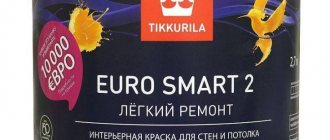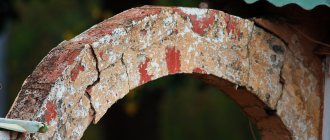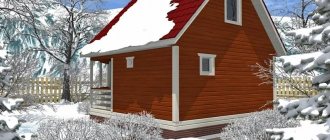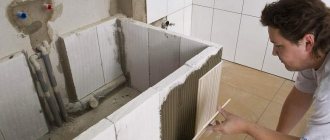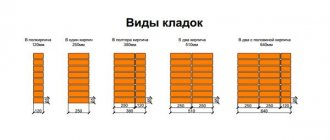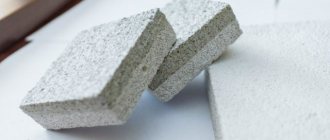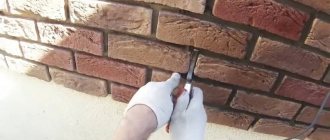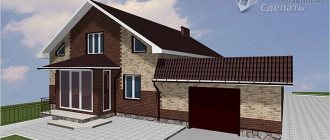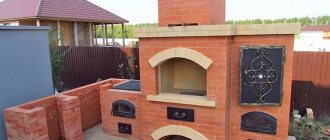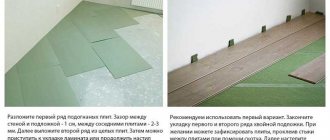Brick is a reliable and durable material, but external influences also have a negative impact on it. To maintain the attractiveness of the structure and extend its service life, it will be necessary to carry out strengthening work; brick varnish is often used for this purpose. The composition allows you to not change the appearance of the surface, but at the same time leaves a film coating that serves as a reliable protective barrier. For varnishing to be successful, you need to know the specifics of choosing the composition and its application. This will be discussed in detail below.
Varnishes for bricks for external and internal work
Brick varnish for exterior or interior use is a good option for obtaining protection from various influences. To treat the base in residential areas, it is necessary to use solutions that are not hazardous to human health.
When it comes to work on the outside of a building, it is necessary to use compounds that are resistant to natural factors. Accordingly, their reliability and strength should be increased.
Brick varnish for exterior or interior use is a good option for obtaining protection from various influences.
Why do you need to varnish brick?
Varnish for stone and brick helps to protect the material from exposure to water, temperature changes, wind, snow and other natural disturbances. The use of paint implies a change in the color of the base, and this option is not always suitable when designing a room; it may be necessary to preserve the original pattern.
The brickwork may suffer from mechanical shocks; the varnish layer will serve as a barrier so that the base does not collapse and repair work does not have to be carried out.
Varnish for stone and brick helps to protect the material from exposure to water, temperature changes, wind, snow and other natural disturbances.
Properties of paint and varnish
It is recommended to varnish a brick wall outside the building when climatic conditions require harsh exposure. The material itself looks beautiful, so not everyone wants to change its appearance, then varnishing is chosen. There are different varnishes on sale, but most compositions have common properties:
- Creating a film that prevents moisture penetration;
- Strengthen brickwork by being absorbed into the structure;
- They have a high level of adhesion;
- Resistant to chemicals and thinners;
- Withstands temperature changes;
- They are resistant to ultraviolet radiation;
- Increases the durability of the base;
- Create a beautiful decorative coating;
- Prevents the formation of mold and fungi.
It is recommended to varnish a brick wall outside the building when climatic conditions require harsh exposure.
Advantages and disadvantages
Varnish for decorative bricks or another type helps to obtain many positive properties, which is why these products are chosen to protect the base. Among the advantages of using varnishes, the following are noted:
- A water-repellent layer is created;
- Heat-resistant property when they are going to process stoves and other surfaces that are operated at high temperatures;
- Protection against the formation of salt deposits, the decorative property of the brick is preserved;
- Resistance to ultraviolet rays;
- You can create a matte or “wet stone” effect, obtaining the desired design in the end.
The disadvantages include the unpleasant odor that the solutions emit when used; after drying, the effect goes away. But when working, the master must protect himself with a respirator, gloves, and safety glasses.
Heat-resistant property when they are going to process stoves and other surfaces that are operated at high temperatures.
No. 3. Russian or foreign, which brand is better?
On the shelves in construction stores you can find many paints and varnishes with the same characteristics, but from different manufacturers. How can you not fall for the flashy label and buy truly effective formulations?
Pufas
This company ranks first in the ranking of the best paints and varnishes. This is a German manufacturer, which is one of the oldest concerns in the global paint and varnish production market. The company's product range includes more than two hundred types of finishing compounds for working with various materials. The company's products are successfully supplied to Russia and Ukraine. Pufas varnishes dry quickly, have no strong odors, and are easy to apply. They are distinguished by high quality standards and corresponding prices.
Petri
This is an American manufacturer whose products have proven themselves positively among domestic buyers. The line of coatings with the “wet stone” effect for brick bases is especially in demand. Petri impregnations prevent contamination, destruction of substrates and mechanical wear. They are also odorless and dry quickly.
Neomid
In the Russian market of paints and varnishes, the Neomid Stone company has gained the greatest popularity. It produces high-quality impregnations and varnishes that do not contain a dangerous toxic odor. These products can be used in small spaces without any problems. Neomid varnishes are also characterized by the following qualities:
- Form style. The company offers matte and semi-gloss finishes while others offer gloss and semi-gloss options.
- Reliability. The manufacturer has taken care of an increased level of protection against moisture.
- Antifungal impregnation. The varnish creates a dense protective film that prevents the possibility of fungus formation.
“Chief Technologist”
This is a Russian manufacturer that specializes in the development of heat-resistant compounds for fireplaces, stoves, and furnaces. The products of this company are made from foreign raw materials. “Chief Technologist” paint and varnish compositions dry quickly, but immediately after their application an unpleasant toxic odor is felt.
“KrasKo”
The company offers several variants of compositions for coating brick bases: “Protexil”, “Epoxol”, “Texil” and “Aquastone”. Production technologies are Russian, and raw materials are foreign. High-quality compositions of “KrasCo” have an affordable price, which makes them popular among domestic consumers.
Rustins (UK)
The most popular among the compositions offered by this company is the heat-resistant varnish Brick Varnish (matte). It can withstand temperatures up to +150, prevents the appearance of fungus, cracks, and does not lose color. But its cost is significantly higher than its Russian analogues.
Fireproof KO-85
This type of paint and varnish is designed specifically for stoves, fireplaces and fireboxes. It is suitable for working with metal, stone, ceramic, concrete, brick and even wooden substrates. Fireproof varnish does not support combustion and reliably protects against fire and destruction. It can be applied even at low temperatures. It dries quickly, and the pungent smell quickly disappears. When applying just one layer, the surface will be reliably protected from moisture and condensation.
Types of varnish for bricks
An important difference between varnish solutions is the component used in the base. The technical characteristics of the coating depend on the composition, so when choosing, you need to understand the features of the main options.
The technical characteristics of the coating depend on the composition, so when choosing, you need to understand the features of the main options.
Polymer varnishes
Polymer types are distinguished by their universal properties; they can be used indoors and outdoors where there is no heating. They create a layer that can withstand low temperatures, humidity, and are quick-drying. They can be used not only for processing brick, stone and other materials; they create a protective coating against rust with a high level of wear resistance.
Polymer products are easy to apply, so they are considered a good choice for beginners and are sold at an affordable price.
Polymer types are distinguished by their universal properties; they can be used indoors and outdoors where there is no heating.
Polyurethane varnish
Also classified as universal, applicable for internal and external surfaces. They receive reliable protection from natural influences and water; special pigments can be added to the composition to change the shade of the layer, if necessary. The surface acquires additional shine.
The use of varnish for application to external walls is popular due to its high level of protective characteristics against various influences.
They receive reliable protection from natural influences and water; special pigments can be added to the composition to change the shade of the layer, if necessary.
Solvent varnishes
This type is made from silicone resins, thanks to which the product penetrates well into the material, creating a reliable and elastic barrier. The colorless coating does not crack, remaining attractive for a long time.
Solvent compositions are highly flammable, so when using, you must follow safety rules.
This type is made from silicone resins, thanks to which the product penetrates well into the material, creating a reliable and elastic barrier.
Acrylic varnishes
Acrylic products are considered multi-component and are intended for interior work. The composition uses an organic type of thinners that protect the brickwork from the appearance of efflorescence, the layer does not crack and withstands mechanical shocks.
Acrylic products are considered multi-component and are intended for interior work.
Properties
Previously, no one covered brick walls with anything. Not everyone today is concerned with finishing brickwork. Whether finishing is needed if the brick already looks great can be understood by assessing its performance characteristics.
No matter how good the masonry is, in regions with a harsh climate, and in Russia there are plenty of such areas, “varnish help” will not hurt neatly laid out rectangles. The facade of a private house, treated with varnish, gains additional attractiveness and does not require repairs much longer than its untreated “brothers”.
Bricks coated with a special varnish composition:
- protected from moisture penetration;
- become more durable due to the product penetrating deep into the building material and partially changing its structure;
- lose sensitivity to various chemicals and solvents;
- do not lose their original color when exposed to ultraviolet radiation;
- gain increased resistance to high and low temperatures;
- become more attractive;
- extend the service life;
- receive protection from fungal diseases and mold;
- gain the ability to repel dirt.
Varnished surfaces turn out matte or glossy, and sometimes acquire a “wet stone” effect. The resulting decorative properties depend on the type of material used.
Heat-resistant varnishes for bricks
Brick is often used when laying stoves; such structures require special heat-resistant varnishes. They must have the properties described below:
- Withstand high temperatures above 200-250 degrees;
- Resistance to water, so that mold and fungal formations do not appear over time;
- High level of adhesion, the composition must penetrate deeply into the material for high-quality protection;
- The presence of acrylic in the varnish so that drying takes less;
- Absolute colorlessness, then the decorative property will be good.
The following brands of similar varnishes are distinguished: KO85, KO815, Siltek-1.
Brick is often used when laying stoves; such structures require special heat-resistant varnishes.
Why is processing needed?
The weakest point in the masonry is the seams. It is through them that moisture penetrates inside, and during frosts the water freezes. There it expands and impacts the bricks, causing the material to collapse. Also, some types of brick can absorb moisture through the pores, which does not have time to dry and remains inside, resulting in microcracks and chips, which also leads to destruction. To protect bricks from corrosion, experts recommend treating them with special compounds and carrying out hydrophobization.
A typical preservative consists of iron oxide, purified water, and binding agents that can penetrate the silicate and enhance its properties. The binder in such a liquid is potassium silicate, which can interact with salts. This helps improve the protective properties of ceramic products, protects them from UV exposure and mold. Protective compounds also improve the appearance and color of bricks.
The compositions increase the resistance of the wall to frost and eliminate the possibility of chips or cracks on them. At the same time, the stone does not lose vapor permeability.
Features of varnishing bricks
In order to carry out varnishing so that the coating protects the brick for many years, it is necessary to follow the working rules. Brick stain or varnish is applied in two layers, the operating temperature range varies from -10 to +30 degrees. Application tools include brushes, rollers, and spray guns.
In order to carry out varnishing so that the coating protects the brick for many years, it is necessary to follow the working rules.
Surface preparation
In order for the layer to lie evenly and beautifully on the surface, first prepare the base. If there is another old finish, it is necessary to remove it by heating it with a hair dryer and using a thinner. Remains of cement mortar are removed with a chisel and hammer.
On brickwork, small defects are repaired with latex-based paint, and the excess part is sanded with sandpaper. The cracks need to be widened and filled with mortar, then sanded to make them even with the rest of the surface. Then the following actions are performed:
- The base is cleaned of all types of contaminants; you can use a soap solution.
- Wait for the brick to dry.
- If efflorescence still remains, then wash with dishwashing detergent using a hard sponge.
- They wait again until the brick has dried.
- Move on to priming, take a deep penetration solution, it is advisable to use a product of the same brand as the varnish.
In order for the layer to lie evenly and beautifully on the surface, first prepare the base.
Subtleties of working with varnish
You can varnish a dry surface; choose a roller with long bristles up to 2 centimeters, or a brush with a thick, stiff brush. It is convenient to work with a spray bottle, it is easy to get a thin layer, but the device is expensive.
At the edges of the strips, the layer should overlap slightly with the other; start coating from the top corner. Multilayer coating is done by drying each layer. Optimal conditions for work will be calm, dry and warm weather.
Caring for the base is easy; you can simply remove dirt with a cloth soaked in soapy water.
Multilayer coating is done by drying each layer.
Seam processing
The seams between the stone elements should be made as even as possible. To do this, use a tool such as a jointer, which allows you to make the seams almost identical. After installation, the seams are filled with a moisture-resistant solution using a wooden stick. Only smooth and correct seams can give a stone pattern a finished look. If the stone is laid in even tiles, then finishing the seams and highlighting them may not be necessary. This installation is considered seamless and the stones are simply joined tightly together.
In order not to damage the structure and color of the stone, metal brushes should not be used when caring for it.
How to calculate material consumption
To understand how many cans of varnish to purchase, you need to calculate the area of the surface to be treated and multiply with the average consumption indicated on the label. The standard average consumption is 100-200 grams/per square meter.
But you should know that the indicator is influenced by the following points:
- Type of base, texture;
- Temperature indicators during operation;
- Composition of the product.
To understand how many cans of varnish to purchase, you need to calculate the area of the surface to be treated and multiply with the average consumption indicated on the label.
Method of use
The paint and varnish product is produced in liquid form, which can be used immediately.
It must be mixed well before use.
If the mixture is thick, then you can add a thinner of about 10% (no more) of the total amount. White spirit is used as a thinner.
To work with the base, use a brush, roller or even a tampon. If the future “wet” base is brick, made of paving slabs, then to create a layer with good protection it is enough to varnish the base once.
If the surface is porous, it is better to coat the varnish two to three times. The time you need to wait between different layers is about 8 hours.
If the paintwork has a water base, it is still better to work with a mask. There should be no sources of ignition near the workplace, because the varnish burns well.
It is also necessary that there is good air circulation in the room during the painting process and after applying the substance.
From the beginning, the stone, before making it “wet”, needs to be cleaned of various contaminants, grease, dust, and then dried well.
If sidewalk tiles are to be painted, you need to be sure that they are not washed away from the underside.
It is also important that the tiles are all well secured.
Varnish manufacturers
There are many varnishes available on the construction market that are suitable for processing brick. For this reason, it is difficult for beginners to make a choice; then you can focus on popular manufacturers:
- Pufas, the varnish of this brand adds a beautiful shine to the material, creating reliable protection against water;
- Petri, a popular polyurethane varnish that is resistant to abrasion and dirt, increasing the service life of the brick;
- Neomid, with a matte effect, does not emit an unpleasant odor, can be used inside a building, creating protection from water and biological formations;
- KrasKo produces several high-quality varnishes for brickwork.
Can be used inside a building, creating protection against water and biological formations.
Varnishes for brick surfaces are used to increase the durability of the material. There are several types of varnishes that can create a film coating that qualitatively protects the base from moisture, ultraviolet radiation, temperature changes and other influences, while maintaining the appearance of the brick unchanged. You can get a matte, semi-matte or glossy finish, improving the decorative properties.
Wall paint technology
Painting a brick wall is a long and labor-intensive process. Having a porous surface, brick absorbs any paint and varnish materials, so for a perfectly even color you will need to apply several layers. In order to apply a new layer, you need to wait until the previous one has dried. When painting, it is possible to use completely different techniques to create a matte and glossy finish, a solid color or a gradient, an aged, shabby and deliberately rough look. Graffiti applied to a brick wall will organically fit into certain styles. Solid walls in pastel or neutral shades have their own aesthetics and elegance: gray, black, white, beige, pale blue, etc.
Details
Decorative coatings with the effect of imitation natural stone
Examples of excellent and high-quality coatings include the following paints:
- Decorative type varnish composition Sherwin Williams Faux Impressions Crackle. It is used to provide an easy way to obtain the effect of cracks.
- Decorative coatings Faux Impressions Dimensional Basecoat are innovative materials that have an excellent degree of adhesion to any surface to which they will be applied. The undoubted advantage of such a paint and varnish material is its very simple application, which can be done even with a regular roller or trowel.
- Latex glaze Sherwin Williams Faux Impressions Latex Glaze can be used when it is necessary to create a surface with a textured and colored effect. Often used to work with the inner surface of doors, walls, various decorative elements or pieces of furniture.
- The decorative coating with the effect of quartz stones, which is another innovative material that has a shiny texture, and unlike similar coatings used by competitors, can be easily applied using a roller.
- Faux Impressions Metallis decorative paints are paints and varnishes with a stone effect that has a metallic shine.
- Decorative coatings that can imitate Venetian plaster.
- Texture-type coatings that imitate the appearance of natural stone.
Next, we will consider the properties and qualities of paints and varnishes
Properties and qualities of paints with the effect of natural stone
Paint for walls with a stone effect has excellent characteristics of strength and resistance to abrasion, as well as any type of mechanical impact. They are resistant to water, but all types of contaminants from their surface can be easily washed off with water. Ultraviolet rays will not have any effect at all on the color and quality of such a coating, and it will not fade or change its color range. Using paint and varnish material to look like real stone, you can successfully hide various defects in the base. The paint will not leave stains and can even act as a protective layer throughout the entire duration of use. Moreover, by giving preference to such a coating, you can obtain a fairly wide range of decorative possibilities, due to the variety of colors and textures that are presented by modern manufacturing companies. The composition of any such paints is frost-resistant, environmentally friendly and has an affordable price.
Tools
The set of tools largely depends on the tasks assigned. If you need to apply varnish to the decor around the doorway, a brush or sponge will suffice. If the amount of work is large, choose a roller or spray gun (airbrush). Spraying varnish for gypsum tiles under brick is convenient at high speed, while the composition is applied evenly, and the shade is the same at all points of the surface.
Avoid fluffy rollers and brushes made from natural materials. They will inevitably leave smudges, and the consumption of paint and varnish composition will be excessively large. Additionally, prepare the following tools and materials:
- Wipes (rags), degreasing solution.
- If you need sanding, you can't do without sandpaper or a sander.
- Impregnation (hydrophobic agent, not always necessary).
For varnishing you can use an airbrush Source ytimg.com
Briefly about the main thing
Gypsum is used to make beautiful and practical finishing materials - gypsum tiles and decorative stone. In order to maintain their attractiveness and improve their performance and decorative properties, varnishing with various compositions is used.
To create a protective layer, oil, acrylic and yacht varnishes are used. The desired composition is selected according to personal preferences: shade, reflectivity and other characteristics. Two layers of varnish are applied to the cladding, trying not to leave smudges. Before work, you need to prepare the necessary tools and study the instructions for applying paintwork.
Varnishing rules
Varnishing, like painting, is the final stage of laying tiles. But, if before painting the gypsum stone, the cladding is allowed to dry for 24 hours, then you will have to wait 1-1.5 weeks before varnishing. By this time, the glue will be completely dry, and the fixation will be as reliable as possible. To get the best results, it is useful to use the following tips:
- A water repellent is first applied. It penetrates into the plaster without forming a film, increases moisture resistance, and gives the material antiseptic properties.
Applying varnish to an uneven surface Source zhkpribrezhny.rf
- The varnish is applied with a convenient tool in two steps. The second layer is applied only after the previous one has completely dried.
- Leaks are almost inevitable. After drying, they are carefully cleaned with sandpaper (before applying the second layer).
- If necessary, the varnish layer can be removed with a special solvent; the plaster will not be harmed by this.
- The drying time of each layer depends on the type of varnish and is indicated in the instructions. The lower the temperature, the longer the coating takes to dry.
- After the second layer of yacht varnish has completely dried, the surface can be wiped with a damp cloth to get rid of residual stickiness.
Varnishing improves the aesthetics of the finish Source idei.club
Winter care: removing ice and snow
The main enemies of paving during the cold season are snow and ice. If in the case of asphalt or concrete pavement it is permissible to use rough mechanical influences on the ice (for example, chipping it with a crowbar), then such methods are not suitable for paving slabs, since they lead to damage to its front side. To remove snow from the surface of paving slabs, shovels made of wood or plastic are used that do not destroy the artificial surface.
Snow collected from the surface of the tiles is spread onto nearby lawns or completely removed from the yard. If the sidewalk is located next to the roadway, it is cleared of snow using special machines designed for cleaning sidewalks.
Salt and strong reagents are “destroyers” of tiles
In winter, paving slabs are especially vulnerable. It is easy to find special chemicals in stores that will help remove ice from the surface of the coating. But when choosing a cleanser, you shouldn’t go for cheapness. It is better to ask the seller in detail about the features of a particular reagent. The wrong choice of product can irreversibly damage the beautiful tile coating: it can cause it to fade, after which it will be impossible to restore the previous shade.
It must be said that such a popular method of dealing with ice as sprinkling paths with salt is dangerous for paving slabs - salt harms the outer layer of the coating, especially if it is used often enough.
Hydrophobization as an effective care product
Care for tiles in winter should be taken care of in advance. The surface of paving slabs is dotted with many pores, which means that moisture easily seeps into the coating, which, when frozen, can lead to its destruction. Therefore, after laying paving slabs, it makes sense to apply a layer of modern waterproofing agent, which reliably closes the pores in the tiles, preventing moisture from penetrating inside.
Advantages of impregnation for porcelain stoneware slabs
Users note that when impregnating porcelain stoneware slabs, they note the following:
- There are no traces left on the surface of the tiles from accidentally spilled liquids. Stains and stains are easily removed, just wipe the surface;
- the lack of moisture does not allow fungal infections to form in the pores. There is nothing for mold to catch on to begin to spread across the surface;
- The porcelain stoneware base is not destroyed, since water droplets do not penetrate inside. Therefore, even if the slabs are located externally, frost cannot have a destructive effect;
- the varnished film is not wetted, so even the ingress of alkalis or acids will not cause a change in the properties of the artificial stone;
- resistance to mechanical abrasion increases. If necessary, it is possible to re-apply impregnation, which will restore the worn protective layer. Some types of impregnations allow the formation of up to 5...7 layers;
- Glossy tiles create a visual effect of constant cleanliness. It is easier to care for, wash with cold or hot water, use washing solutions based on alkali or weak acids;
- impregnated ceramic tiles are used on playgrounds and in rooms where children are. Prevents the release of dust, which can cause allergic reactions.
To obtain the desired effect, you need to follow the basic rules for processing artificial stone with impregnating solutions. Then the applied layer will connect to the base and will remain on the outside for a long time.
Before starting work, testing is carried out across the entire area. A small area is covered with impregnation.
The attached video shows how the properties of porcelain tiles change after using “wet stone” impregnation.
